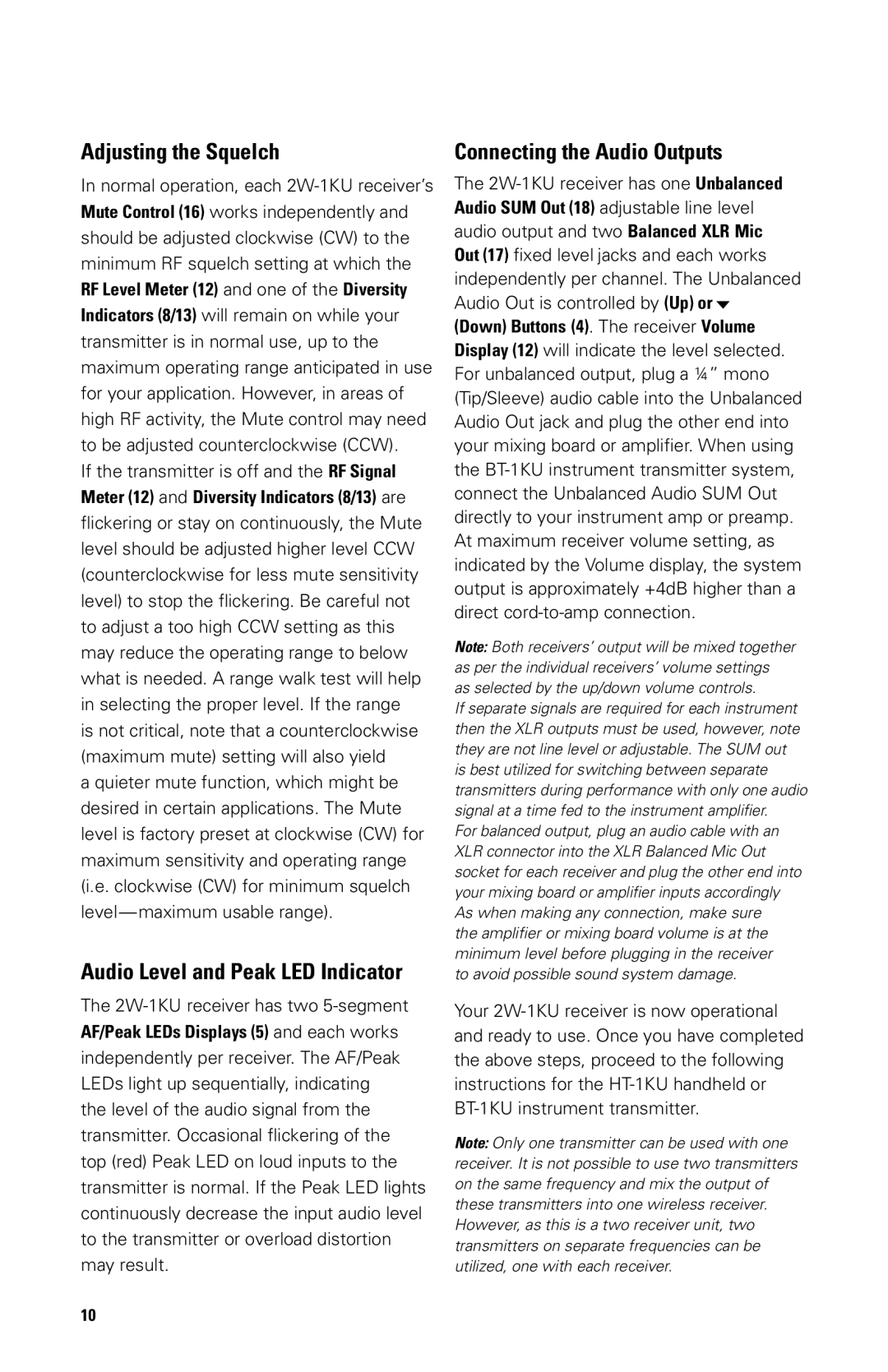Adjusting the Squelch
In normal operation, each
RF Level Meter (12) and one of the Diversity Indicators (8/13) will remain on while your
transmitter is in normal use, up to the maximum operating range anticipated in use for your application. However, in areas of high RF activity, the Mute control may need to be adjusted counterclockwise (CCW).
If the transmitter is off and the RF Signal Meter (12) and Diversity Indicators (8/13) are
flickering or stay on continuously, the Mute level should be adjusted higher level CCW (counterclockwise for less mute sensitivity level) to stop the flickering. Be careful not to adjust a too high CCW setting as this may reduce the operating range to below what is needed. A range walk test will help in selecting the proper level. If the range is not critical, note that a counterclockwise (maximum mute) setting will also yield
a quieter mute function, which might be desired in certain applications. The Mute level is factory preset at clockwise (CW) for maximum sensitivity and operating range (i.e. clockwise (CW) for minimum squelch
Audio Level and Peak LED Indicator
The
Connecting the Audio Outputs
The ![]() (Down) Buttons (4). The receiver Volume Display (12) will indicate the level selected. For unbalanced output, plug a ¼” mono (Tip/Sleeve) audio cable into the Unbalanced Audio Out jack and plug the other end into your mixing board or amplifier. When using the
(Down) Buttons (4). The receiver Volume Display (12) will indicate the level selected. For unbalanced output, plug a ¼” mono (Tip/Sleeve) audio cable into the Unbalanced Audio Out jack and plug the other end into your mixing board or amplifier. When using the
Note: Both receivers’ output will be mixed together as per the individual receivers’ volume settings as selected by the up/down volume controls.
If separate signals are required for each instrument then the XLR outputs must be used, however, note they are not line level or adjustable. The SUM out is best utilized for switching between separate transmitters during performance with only one audio signal at a time fed to the instrument amplifier.
For balanced output, plug an audio cable with an XLR connector into the XLR Balanced Mic Out socket for each receiver and plug the other end into your mixing board or amplifier inputs accordingly As when making any connection, make sure
the amplifier or mixing board volume is at the minimum level before plugging in the receiver to avoid possible sound system damage.
Your
Note: Only one transmitter can be used with one receiver. It is not possible to use two transmitters on the same frequency and mix the output of these transmitters into one wireless receiver. However, as this is a two receiver unit, two transmitters on separate frequencies can be utilized, one with each receiver.
10
